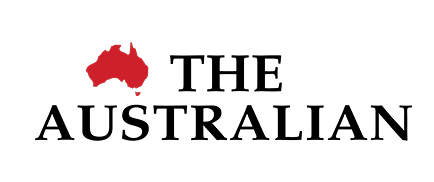In November last year, Paul Brereton explained how his National Anti-Corruption Commission decides which matters to pursue.
Given what has come to light about the Albanese government’s $2.4m settlement with Brittany Higgins, those remarks by the NACC commissioner might cause some people some sleepless nights.
If his key criteria are applied to what is now known about the Higgins affair, the case for a NACC inquiry is clear.
Brereton listed his criteria while speaking at a public sector governance forum hosted by the Governance Institute of Australia. Those factors include whether an incident involved senior public officials, whether it had a significant impact – financial or otherwise – on the public interest, whether it involved potentially systemic corruption, and whether a NACC inquiry would clear the air and restore public confidence.
The real test will be whether the NACC has the fortitude to deal with all the factors that led to that $2.4m payout.
Will it examine the role of senior political figures in promoting aspects of the Higgins narrative that have now been debunked, and whether that political commitment derailed the normal procedures for compensation claims?
And if the Higgins payout was compensation for victimisation by former Coalition ministers that never happened – which now seems to be the case – what is to be done about the bureaucratic rules that made this possible?
Does the Higgins affair point to a need for systemic reform to ensure the rules governing payouts can withstand the occasional political frenzy in the national capital?
This week’s ruling in the failed defamation case brought by Bruce Lehrmann against Network Ten and Lisa Wilkinson determined, on the balance of probabilities, that Lehrmann raped Higgins.
But when the last of the Higgins-related litigation subsides, the NACC should take a close interest in another aspect of this week’s judgment.
To move earlier would be to risk covering some of the same ground as court processes, which should always take precedence.
The Federal Court’s Justice Michael Lee determined this week that Higgins made false representations to the commonwealth in the personal injury claim that resulted in her $2.4m payout.
Some of those false assertions concerned former Coalition ministers Linda Reynolds and Michaelia Cash.
The judge also denounced the assertion there had been a political cover-up. Justice Lee wrote: “In the febrile atmosphere of 2021 many instinctively believed what Ms Higgins asserted about the rape and the subsequent cover-up of the crime.
“In advance of any trial where the rape allegation would be examined, the broader allegations of Ms Higgins resulted in her being feted by many, becoming a celebrated speaker at a mass demonstration, being nominated for awards, receiving invitations to make a nationally televised speech at the National Press Club and a book deal with Penguin Random House (apparently worth $325,000),” the judgment says.
This needs to be viewed in the context of what was already known: The two people who were best placed to test the Higgins claim, Reynolds and Cash, had been prevented from taking part in the mediation that resulted in the payout.
The Albanese government had threatened to tear up an agreement to pay their legal fees.
That meant the officials running the mediation were presented with an incomplete version of reality.
One of the issues Brereton might wish to examine is whether this undermined the ability of government officials to discharge their duty to defend the financial interests of the commonwealth.
That duty is spelled out in Appendix C of the government’s Legal Services Directions which says monetary claims are to be settled “in accordance with legal principle and practice” and only if there is “at least a meaningful prospect of liability being established”.
It would also be worthwhile exploring how those requirements could be satisfied without permitting Reynolds and Cash to tell their side of things.
There are other aspects of the settlement that are worth exploring. Because it exceeded $100,000, the Legal Services Directions state that the government needed to obtain a legal opinion, either from the Australian Government Solicitor or an external lawyer, stating that the payout was being made in accord with legal principle and practice.
That seems unlikely. It would mean that a lawyer had endorsed the use of taxpayers’ money to settle a claim that had not been tested by those accused of wrongdoing; and that lawyer had then asserted that this complied with legal principle and practice.
If there is no such legal opinion, the only way a payout could be made under the Legal Services Directions would require involvement by the Attorney-General, Mark Dreyfus.
This is spelled out in clause 5 of Appendix C of the Legal Services Directions which empowers the Attorney-General to set aside the normal rules if this is necessary due to “exceptional circumstances”.
If there is no supporting legal opinion for this payout, the task confronting Brereton is to extract an explanation about what “exceptional circumstances” made it necessary for the government to give Higgins $2.4m.
The government’s assertion that it complied with the rules is not good enough. If it relied on “special circumstances” loophole, it should say so and explain whether it fell victim to the debunked aspect of the Higgins narrative.
There is a need to clear the air and determine whether this payout was infected by a political frenzy based on falsehoods.
To achieve such an outcome, Brereton would almost certainly need to focus on who was responsible, what should be done to eliminate systemic weaknesses in the Legal Services Directions, and what should happen to any wrongdoers.



